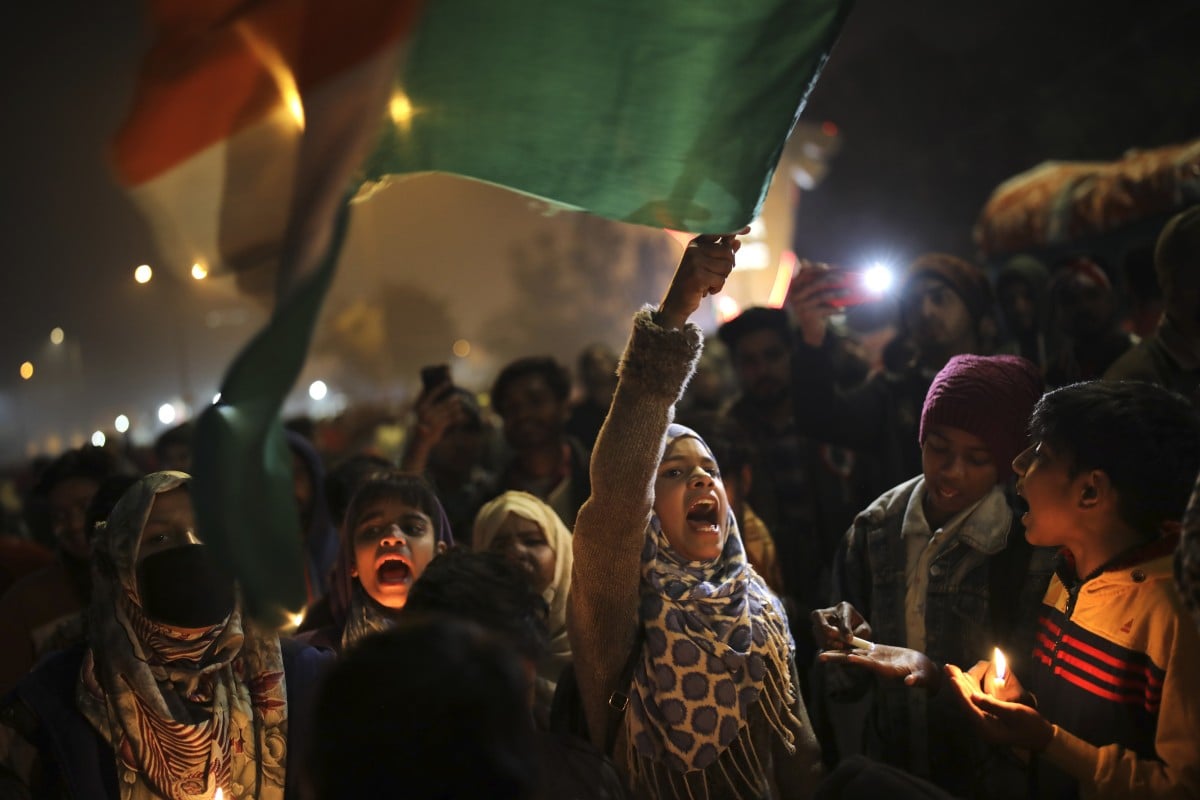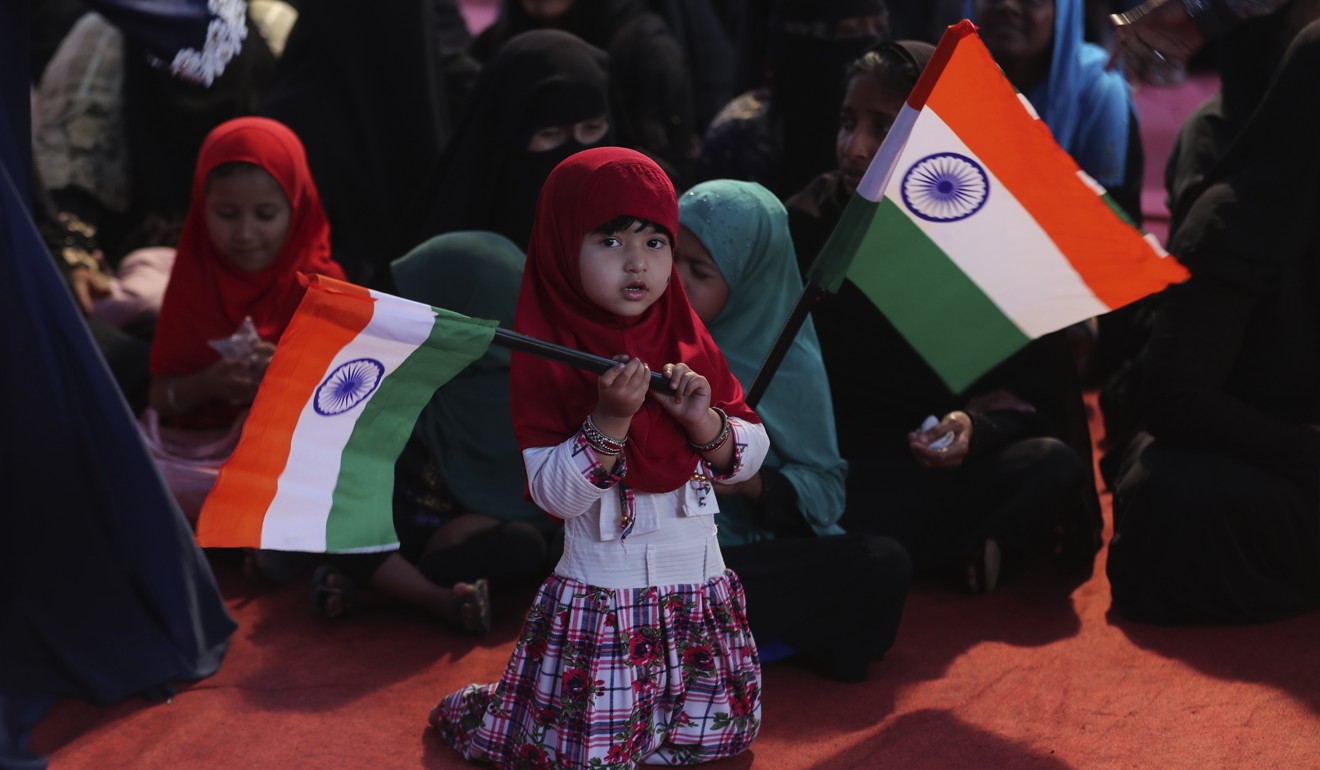- Indians protesting the government’s new Citizen Amendment Act and national registry have moved from messaging apps to the video-sharing platform TikTok to capture a wider audience
- With TikTok censoring extremist material, some Indian video makers have found creative ways to challenge majority political views

Romita Saluja 9 February 2020

Laxman Shukla returned home bruised after a long day of protesting. His father and uncle looked at him, annoyed. “What is with you carrying this flag all day long at protests?” his father asked as Laxman went to the bathroom to nurse his wounds. “Why don’t you look for a job instead?”The scene is from the short film “Mudda NRC”, or “The Issue NRC”, referring to the National Registry of Citizens that India is expected to be implemented in tandem with its Citizenship Amendment Act (CAA), which has prompted nationwide unrest and left dozens of people protesting the law dead or injured.The film barely attracted 500 views within a week after it was uploaded on YouTube in January, but on the micro video-sharing TikTok platform, one of its scenes – where Laxman explains the nuances of the act – has been viewed over 600,000 times.The CAA, which was passed in December by the Indian Parliament, offers fast-track citizenship to Hindus and other religious minorities from Pakistan, Afghanistan and Bangladesh, but excludes Muslim immigrants. The CAA, together with the NRC, could potentially threaten the citizenship of millions of people – mostly Muslims.
WhatsApp to Bridgefy, what Hong Kong taught India’s protesters19 Dec 2019
According to protesters, it is a deliberate and dangerous attempt by Prime Minister Narendra Modi’s Hindu nationalist government to further marginalise and punish Muslims as well as the so-called paperless poor, who cannot document their citizenship.The protests in India – like the anti-government protests that have wracked Hong Kong over the past year – have been largely leaderless, driven by civil society groups like students and women. And like the Hong Kong movement, India’s has also been sustained through the use of social media.
In New Delhi in December, the police stormed the campus of Jamia Millia Islamia University, severely beating students. Even as they were being attacked, the students started sending out videos and voice notes through their WhatsApp messaging app and Twitter. Within hours, hundreds of people had gathered outside police stations and university gates to support the students.THIS WEEK IN ASIA NEWSLETTERGet updates direct to your inboxSUBSCRIBEBy registering, you agree to our T&C and Privacy PolicyIn another incident in Hyderabad, when the authorities denied permission to gather, the protesters coordinated on WhatsApp groups and organised flash protests. When the government banned the internet in certain areas of the country, the protesters began using offline messaging apps Bridgefy and FireChat. Many say that they sought inspiration from Hong Kong protesters, who have used similar tactics on social media platforms to spread their message of solidarity.
TikTok as protest platform
Besides using offline messaging apps, a community of young men and women in India, from big cities as well as small villages, has found a space for their resistance on TikTok, using it as the their platform of choice over Twitter and Instagram, which they view as “too argumentative” or “too woke”. There are currently thousands of videos available for viewing on TikTok under hashtags like #RejectNRC and #Reject_CAA_NRC.
Using simple, everyday situations, the TikTok users, who are mostly in their early 20s, say they are trying to convey a message of solidarity and communal harmony. There is, for instance, a popular video of three Hindu, Christian and Sikh men shielding a Muslim friend as he prays.
In another video, which has been viewed more than 4.5 million times, a man tries to incite hatred between two friends, one apparently a Hindu and the other a Muslim. They both end up thrashing the instigator, saying “We have read each other’s religious books and celebrated festivals together, but people like you try to divide us for your gains.”
Modi thinks he is Xi, but protests show India is not China 6 Jan 2020
“I made it because the people in power are turning us against each other,” said Sameer Tyagi, the creator of the video. “We have lived in harmony for ages. But it is being disturbed now.”
TikTok has been downloaded over 200 million times in India, with users vying for global attention. “TikTok is an attractive platform,” said Kailas Karthikeyan, a technology analyst in Delhi. “Its intense focus on easy-to-make short videos has made it popular in India.”
Hints of censorship
In 2019, TikTok, which is owned by the Beijing-based company ByteDance, banned political advertisements on the app, maintaining its “apolitical” stand.
However, media reports were already alleging that TikTok was shadow-banning – blocking or partially blocking a user from an online community – and censoring pro-Hong Kong protest videos. TikTok denied this, with the company also insisting that it was not “influenced by any foreign government, including the Chinese government”.
In its transparency report last year, TikTok revealed that it had received the maximum number of content takedown requests from India.
Students and police clash over India’s citizenship act
Sometime after Tyagi’s video went viral, he received a notification from TikTok, saying he had violated community guidelines. Since then, he says his views of his videos have declined sharply.
“They did not even explain what guideline I had violated. Now, no matter what I do, my videos just don’t work well,” he says.
Ajay Barman, who has over 900,000 followers, makes similar claims. “My account has been banned three times,” he said.
“I have been making videos on Hindu-Muslim unity for two years. Now, I am able to post but it takes about 15 days to reach the number of views that I earlier used to get in two days.”
But a TikTok India spokesperson said political content is allowed “as long as it does not include extremist content, such as hate speech.”

Regardless of the amount of censorship Indian users face from TikTok, they are still finding creative ways to use the platform to challenge majority political views.
In “Mudda NRC”, for instance, the makers chose the setting of a middle-class Hindu family to explain the nuances of NRC. Asad Khan, who directed the film along with Ashish Agnihotri, says, “We never considered TikTok for our work. But looking at the massive response, we might as well use it seriously.”
Ateeque Baig, who often posts on religious harmony, says, “On TikTok, it is easier to connect with people. I was able to get 24,000 followers within just eight months.” Baig’s video about a Muslim and a Hindu boy rejecting communal politics received 4.9 million views.
As Tyagi says, “When things go viral on TikTok, they go viral everywhere.”This article appeared in the South China Morning Post print edition as: Protest against law seen as anti-Muslim takes page from HK
